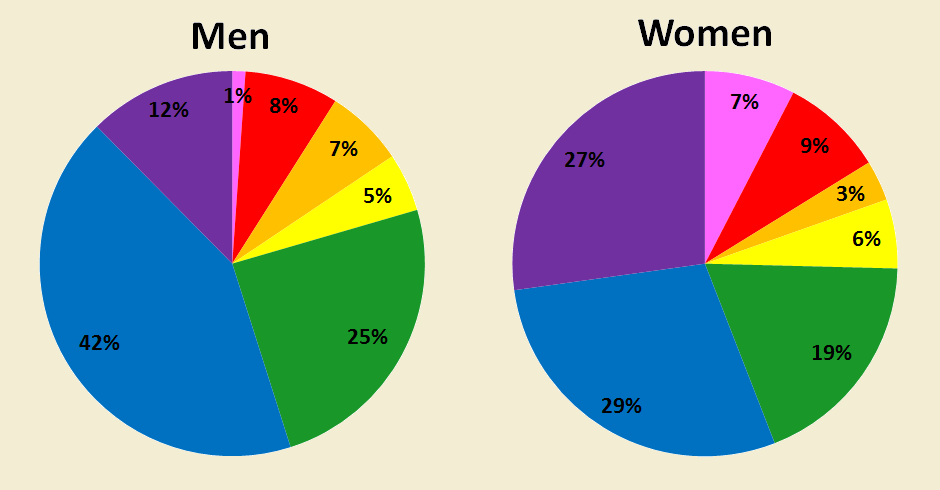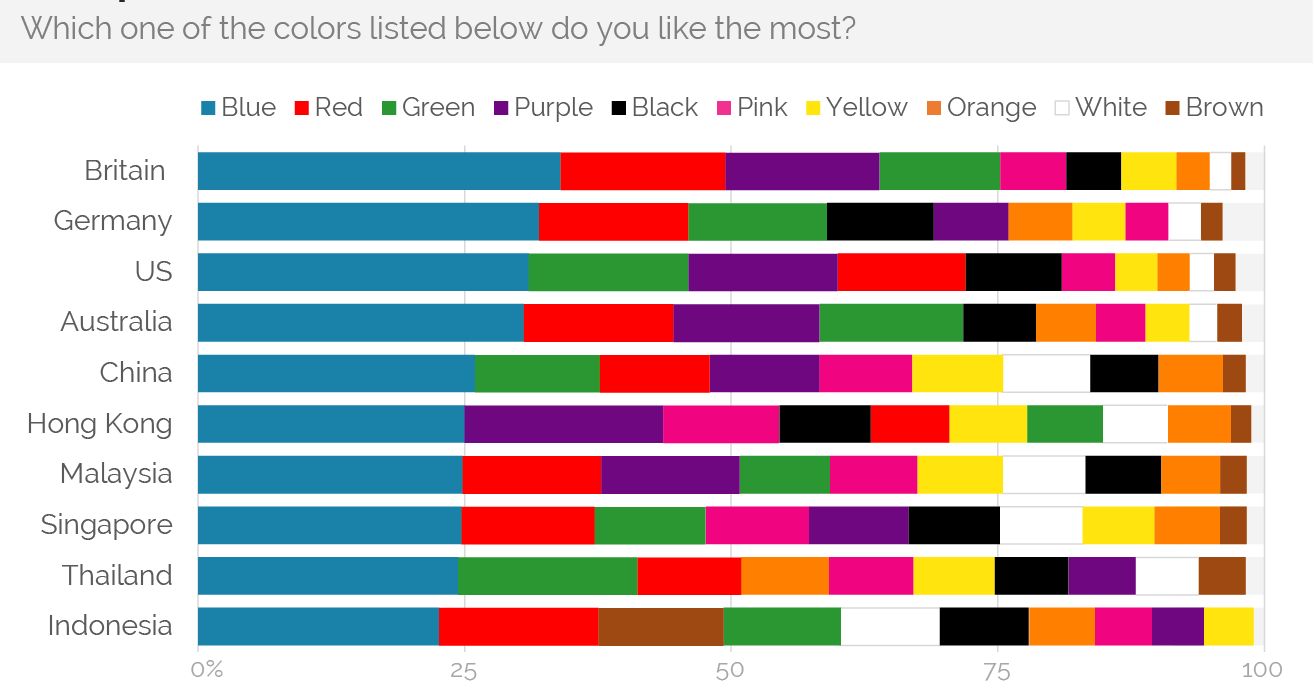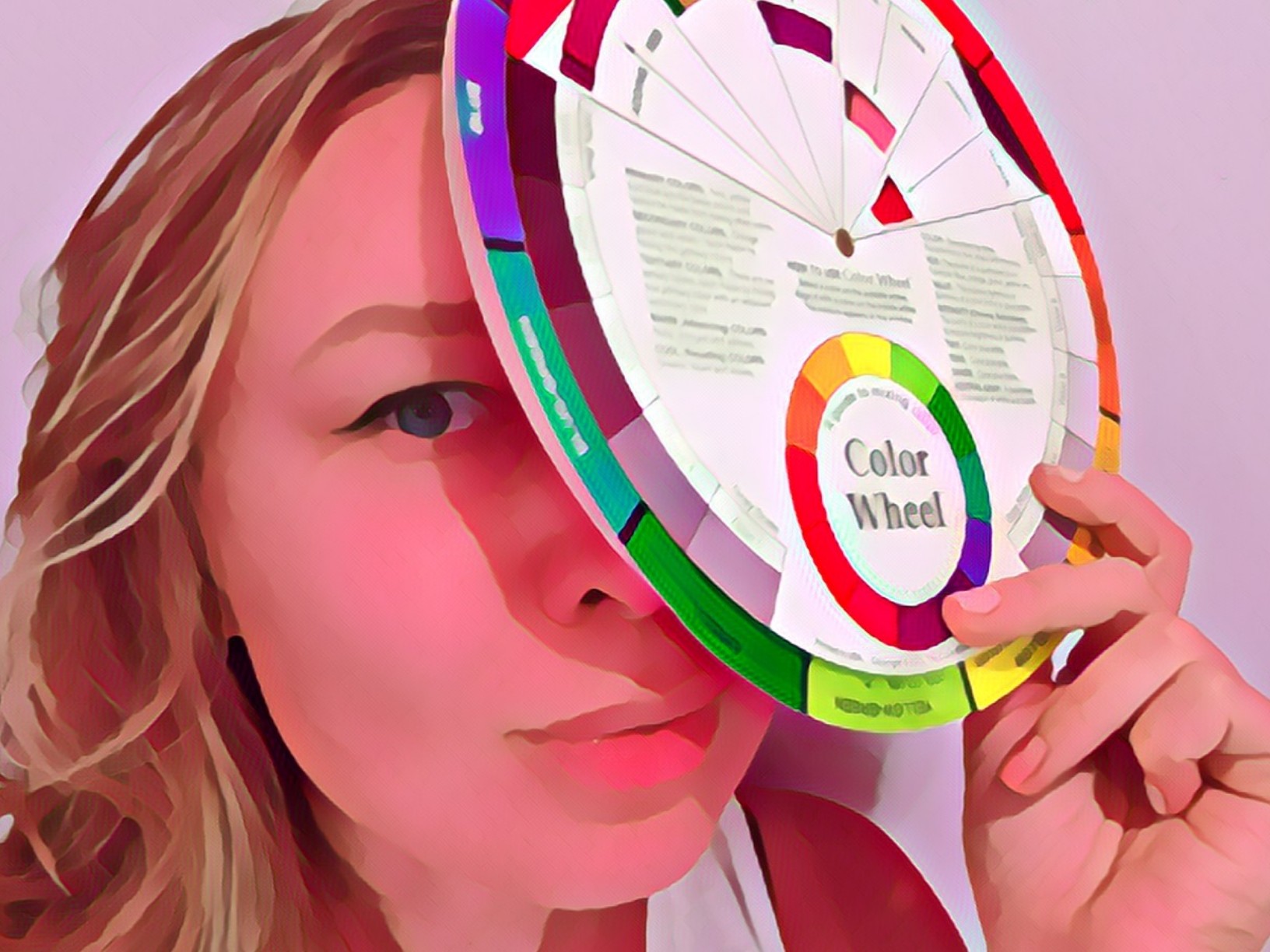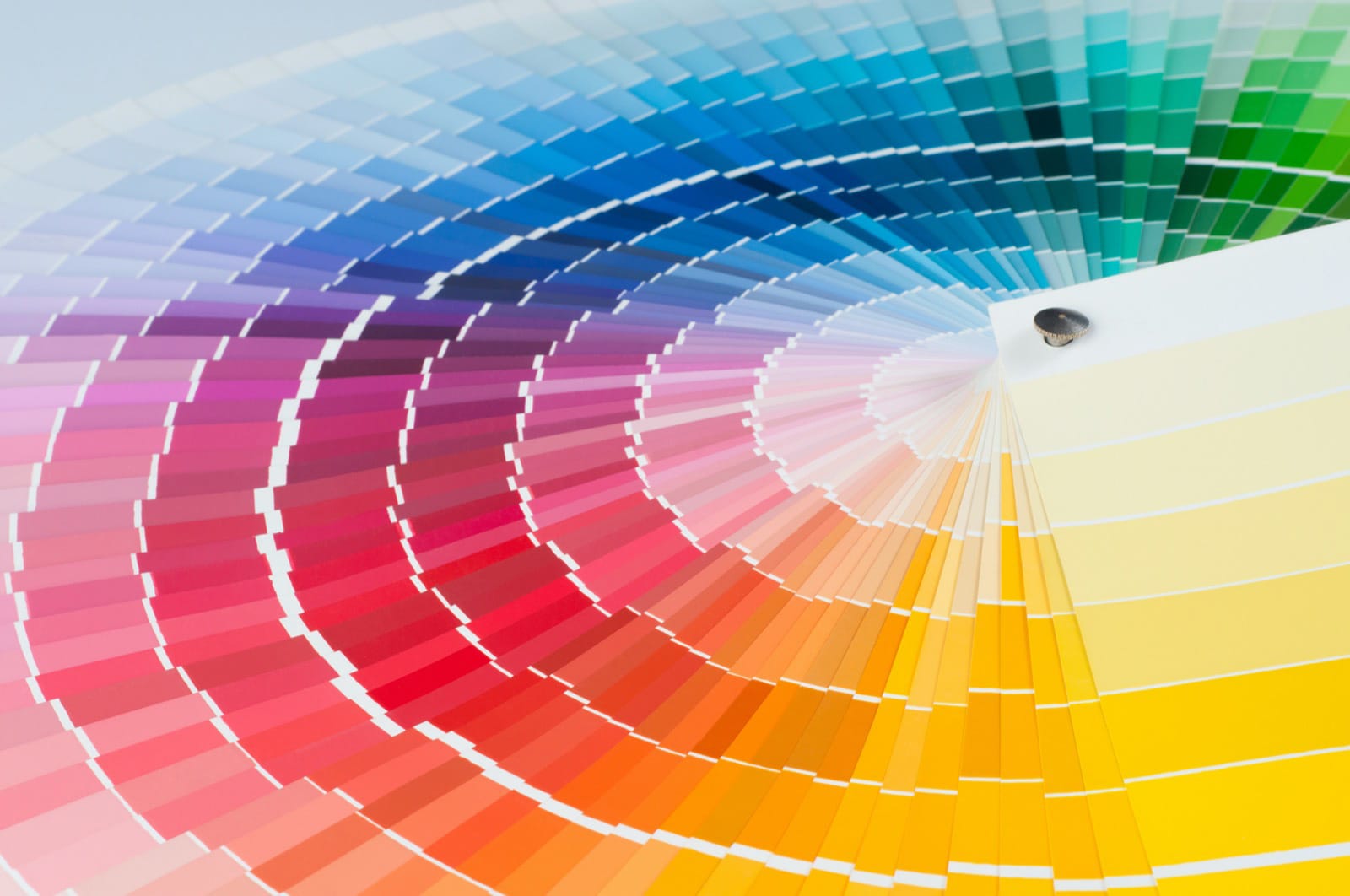Have you ever asked yourself, “What Is The Most Popular Color In The World?” or “What is the most popular color in the USA?”, “What is the most popular color in 2022?”. Have you ever wondered how color 🔵 🔴 🟢 🟣 influences marketing and sales? Or are you among those surprised that the right colors can help you attract the right customers and consumers? Artists, illustrators, and web designers know that color dramatically affects decision-making, moods, feelings, and emotions. “Colors, like features, follow the changes of the emotions,” the artist Pablo Picasso once remarked. This article will cover how the right colors can highlight your business’ strengths and improve your marketing campaigns. Knowing statistics about the most popular colors in the USA and understanding the basics of Color Psychology will help your business target more successfully online and offline.
I am Natalia Golenkova, US-based Digital Advisor, Google certified specialist, and Google Partner with hands-on experience in digital marketing & online security.
WHAT IS THE MOST POPULAR COLOR IN AMERICA?

During a recent study at the University of Maryland, sociologist Philip Cohen asked nearly 2,000 men and women a simple question: “What’s your favorite color?” Blue turned out to be the most popular across the board, followed by green for men and purple for women.
WHAT IS THE MOST POPULAR COLOR IN 2022?
Do you want to be at the edge of the new trends? Unfortunately, there are tons of options and lots of opinions when it comes to trends in 2022, so I can only navigate you in 2022 color trends:
The Pantone Color Institute has released its annual fashion color trend report for 2022, revealing what colors will be in style.
Shutterstock has released its 2022 Color Trends Report based on billions of pixels from images and videos downloaded from their platform worldwide.
The biggest color trends in 2022, according to Canva.

WHAT IS THE MOST COMMON FAVORITE COLOR?
Everyone has heard about color psychology. Color psychology is a study of hues and their influence on human behavior. It’s one of the key pillars of successful branding and marketing. So yes, it is a crucial point when deciding on your logo’s colors. According to color psychology, many people describe blue as their favorite color and the most preferred color by men. Because so many people favor blue, it is often viewed as a non-threatening color, but it can sound a bit conservative or traditional. On a positive note, blue is often seen as a sign of stability and reliability.
WHAT ARE THE MOST POPULAR COLORS IN THE WORLD?
Blue Is #1
A worldwide survey reveals that blue is the most popular color in 10 countries across four continents. Yet a new YouGov survey conducted in 10 countries across four continents shows that one color — blue — is the most popular across the board. Between 23% (in Indonesia) and 33% (in Great Britain) like blue most out of the colors listed, putting it 8–18 points ahead of any other color.
Red, Green & Purple Are #2
The second-most popular color varies more from place to place. However, it’s always one of three other options: green (second in Thailand, China, and the United States), red (in Indonesia, Singapore, Germany, and Britain), or purple (in Hong Kong). In Malaysia and Australia, red and purple are tied for second.
Blue wins even in places like China, where colors like red, yellow, and green are considered lucky (though the distinction between blue and green found in English is a more modern development for the Chinese language).

WHY IS BLUE THE MOST POPULAR COLOR?
Blue is often found in nature, such as the pale blue of a daytime sky or the rich dark blue of a deep pool of water. For this reason, perhaps, people often describe the color blue as calm and serene. Yet as a cool color, blue can sometimes seem icy, distant, or even cold. Individual experiences also have an important effect on the moods that colors can create. For example, if you associate the color blue with a vivacious friend, you might see it as a high-energy color that evokes a sense of excitement.
SOME FACTS ABOUT BLUE COLOR:
- Blue is described as a favorite color by many people and is most preferred by men.
- Because so many favor blue, it is often viewed as a non-threatening color that can seem conservative and traditional.
- Blue calls to mind feelings of calmness or serenity. It is often described as peaceful, tranquil, secure, and orderly.
- Blue is often seen as a sign of stability and reliability. Businesses that want to project an image of security often utilize blue in their advertising and marketing efforts.
- Blue can also create feelings of sadness or aloofness. Consider how a painting that heavily features blue, such as those produced by Picasso during his “blue period,” can seem so lonely, sad, or forlorn.
- Blue is often used to decorate offices because research has shown that people are more productive in blue rooms.
- Blue is one of the most popular colors, but it is one of the least appetizing. Some weight loss companies even recommend eating your food off of a blue plate. Blue rarely occurs naturally in food aside from blueberries and some plums. Also, humans are geared to avoid poisonous foods, and blue coloring in food is often a sign of spoilage or poison.
- Blue can also lower the pulse rate and body temperature.
- Consider how blue is used in language: blue moon, blue Monday, blue blood, the blues, and blue ribbon.
THE PSYCHOLOGY OF COLOR IN MARKETING & BRANDING
Color psychology suggests that various shades can have a wide range of effects, from boosting our moods to causing anxiety. But could the color of the products you purchase ever say something about your personality? For example, could the color of the car you buy somehow relate to some underlying personality traits or quirks?
Color preferences might say something about the type of image you may be trying to project. From the clothes you wear to the car you drive, color preferences can sometimes indicate how we want other people to perceive us. But, of course, other factors, such as age and gender, can also influence our color choices.
How colors may be perceived by the audience?
- White: As many of our readers have suggested, white can feel fresh and clean. The color is often used to evoke a sense of youth and modernity.
- Black: Our readers often describe black as a “powerful” color, which might be the reason why black is the most popular color for luxury vehicles. People often describe the color as sexy, powerful, mysterious, and even ominous.
- Silver: It’s the third most popular color for vehicles and is linked to a sense of innovation and modernity. High-tech products are often silver, so the color is often linked to new, modern, and cutting-edge things.
- Red: Dreaming of a red vehicle? Red is a bold, attention-getting color, so preferring this type of car might mean you want to project an image of power, action, and confidence.
- Blue: People often describe blue as the color of stability and safety. Driving a blue car or SUV might indicate that you are dependable and trustworthy.
- Yellow: According to the experts, driving a yellow vehicle might mean that you are a happy person in general and perhaps a bit more willing than the average person to take risks.
- Gray: The experts suggest that people who drive gray cars don’t want to stand out and prefer something more subtle.
Of course, the color selections we make are often influenced by price, selection, and other practical concerns. Not only that, but color preferences can also change over time.
People might prefer brighter, more attention-getting colors when they are younger but find themselves drawn to more traditional colors as they grow older. The buyer’s personality can play an important role in color selection, but buyers are often heavily influenced by factors such as price and availability.
For example, purchasing a white vehicle might be less about wanting people to think that you are young and modern and more about the climate you live in; people who live in hot climates typically prefer light-colored vehicles over dark ones.

THE PROBLEM WITH COLORS
Every color has its positive and negative connotations. Remember that logo design is art, and art is subjective. For example, some people may find the color blue soothing because it reminds them of the ocean, whereas someone with severe thalassophobia may find it terrifying.
The fact is that you will never be able to choose a color that is universally adored. So, use scientific knowledge about the colors and focus on the specifics of your business audience!

FAQ
-
What credentials do we need to start working
1. We need 100%: 1.1. Domain name registrar credentials (name of registrar, login, password, pin) 1.2. Hosting (it can be the same credentials as a domain registrar or separate) 1.3 MYSQL 1.4 FTP 2. It is important to provide credentials (if you have accounts): 2.1. Google my business page 2.2. Bing Places 2.3. Yelp 2.4. Social media (FB, Instagram, Twitter, any others) 2.5. Any other 3rd party services you use online on your website Please take into consideration that we can start working on the project and be responsible for your digital presence only after all the credentials are provided.
-
How to choose the best domain name for your business and aviod common mistakes
The domain name you choose has a vast and long term impact on all your marketing affords. It is better if you can consider the domain name before you even choose your business name. 1. Short and memorable 2. Keywords in the domain name 3. Choose the right TDL extension 4. Use Hyphens No underlines between words when the domain name is long 5. Consider buying multiple TLD extension (help to secure your brand) 6. Consider Buying similar domain names (help to secure your brand) Do not forget about SSL certificate, Your website should be running securely (https). 7. A Decent period (one-year minimum) of registration with autopay is recommended
-
What is website accessibility compliance (ADA)?
A website is considered accessibility compliant when it is properly designed and built for people with disabilities, so people with disabilities can use them. Web accessibility encompasses all disabilities that affect access to the Web, including auditor, cognitive, neurological, physical, speech, visual. Making the web accessible benefits individuals, businesses, and society. Although there are some difficulties in achieving 100% website accessibility compliance. You can read about website accessibility compliance on https://www.w3.org/, which is dedicated to Strategies, standards, and supporting resources to help make the Web more accessible to people with disabilities. For more info please read our post WEBSITE ACCESSIBILITY COMPLIANCE IN THE USA
-
Why don't Google My Business Pages & Google Maps Listings work properly during COVID-19?
During COVID-19 pandemic Google Limited Google My Business and Google maps Listing functionality. It might seriously affect your local SEO. WHAT ARE THE MAJOR CHANGES? Review replies are now available. New user reviews, new user photos, new short names, and Q&A might be paused and will gradually return by country and business category. Google is going to publish gradually delayed user reviews and photos submitted to Google Maps. Businesses might experience publishing delays for other edit types or when contacting support about these pending edits. Delays for publication of new listings, claims, and verifications for some types of businesses to Google Search and Maps. Updated for specific industries and categories. For example, changes in April 2020 for health care providers and medical professionals. What else should I do? Goole issued really useful sources to navigate small and local businesses during the Coronavirus pandemic. Please, subscribe to Google for small business updates and read Covid-19 updated.

We arе here to help you with your online presence!






